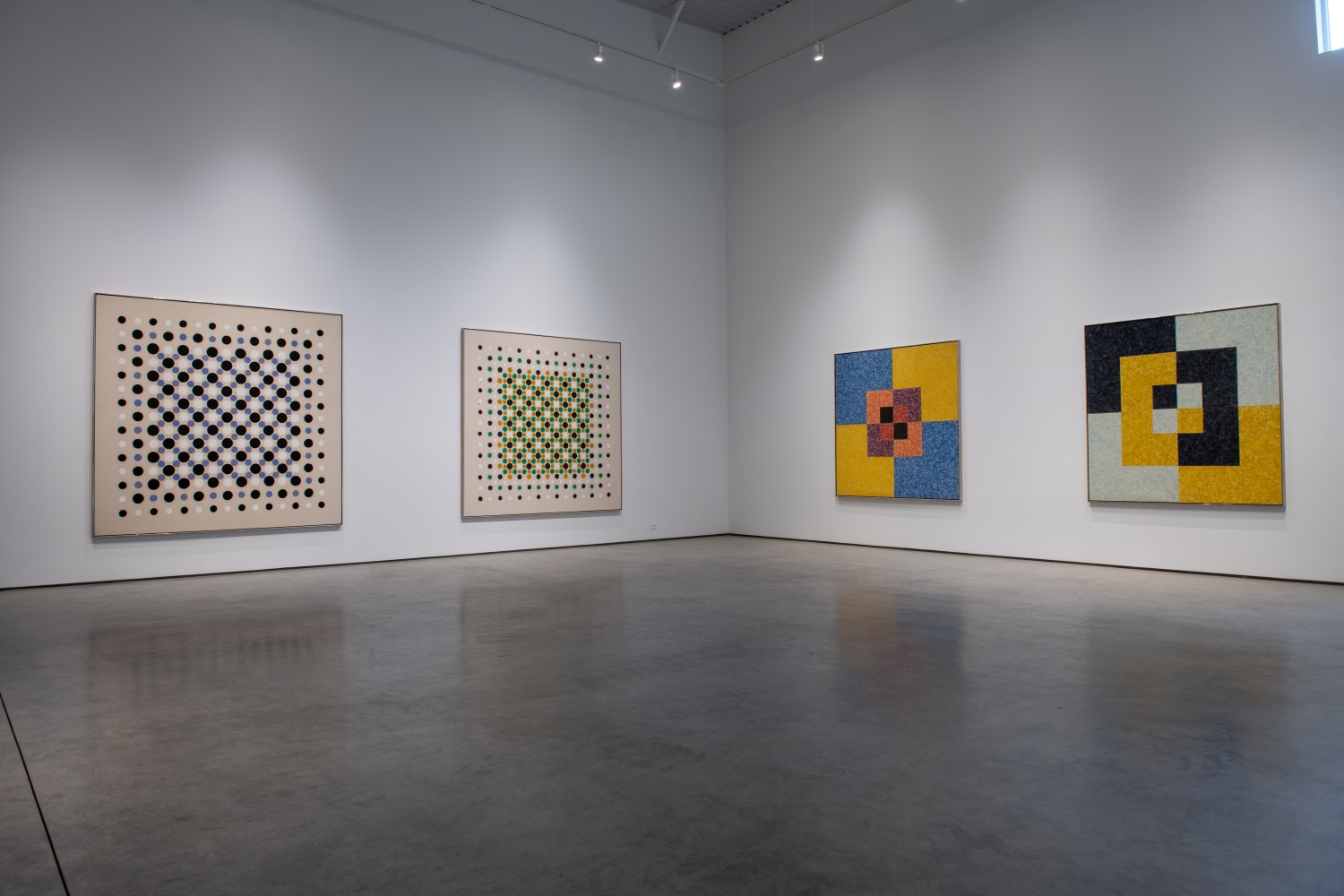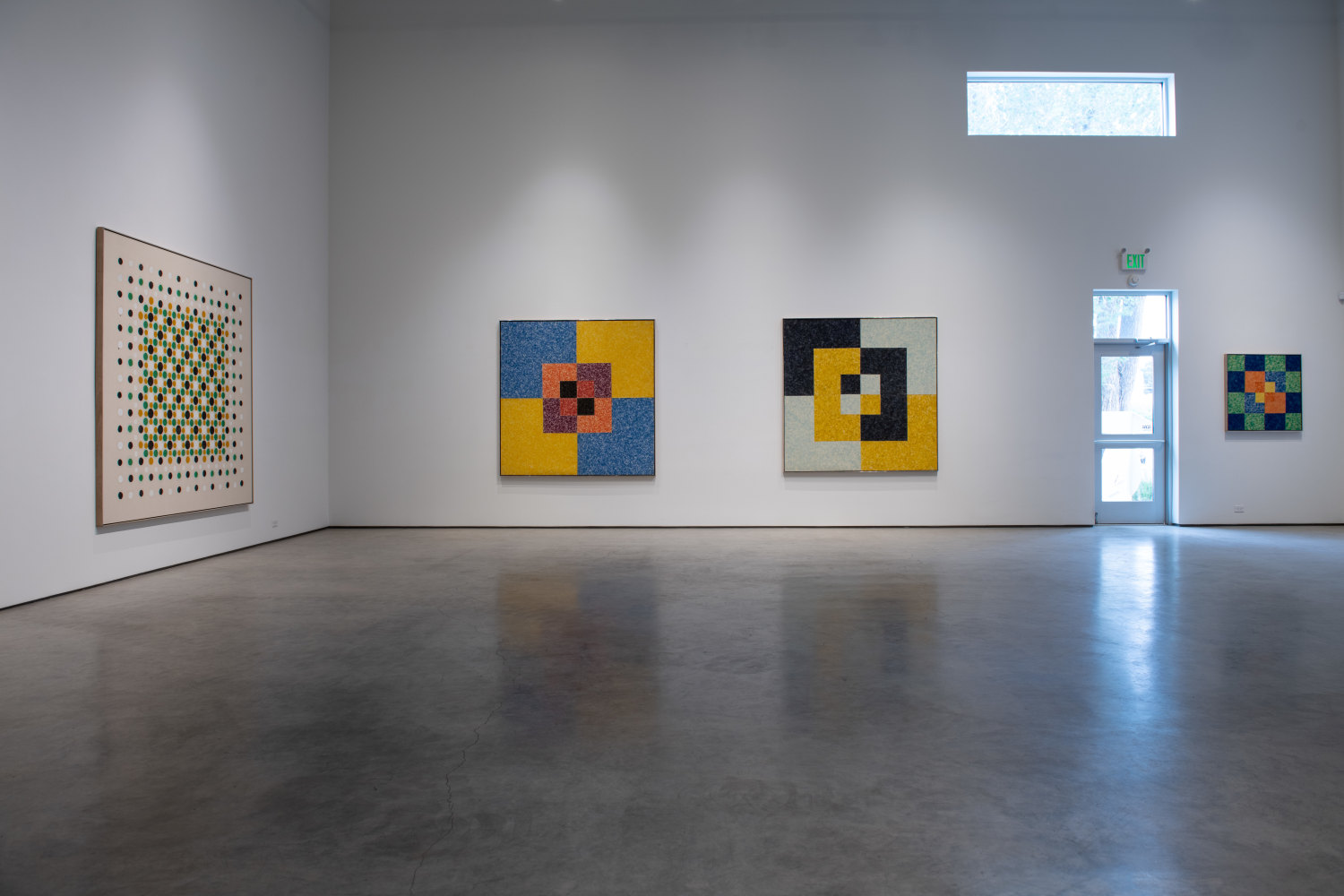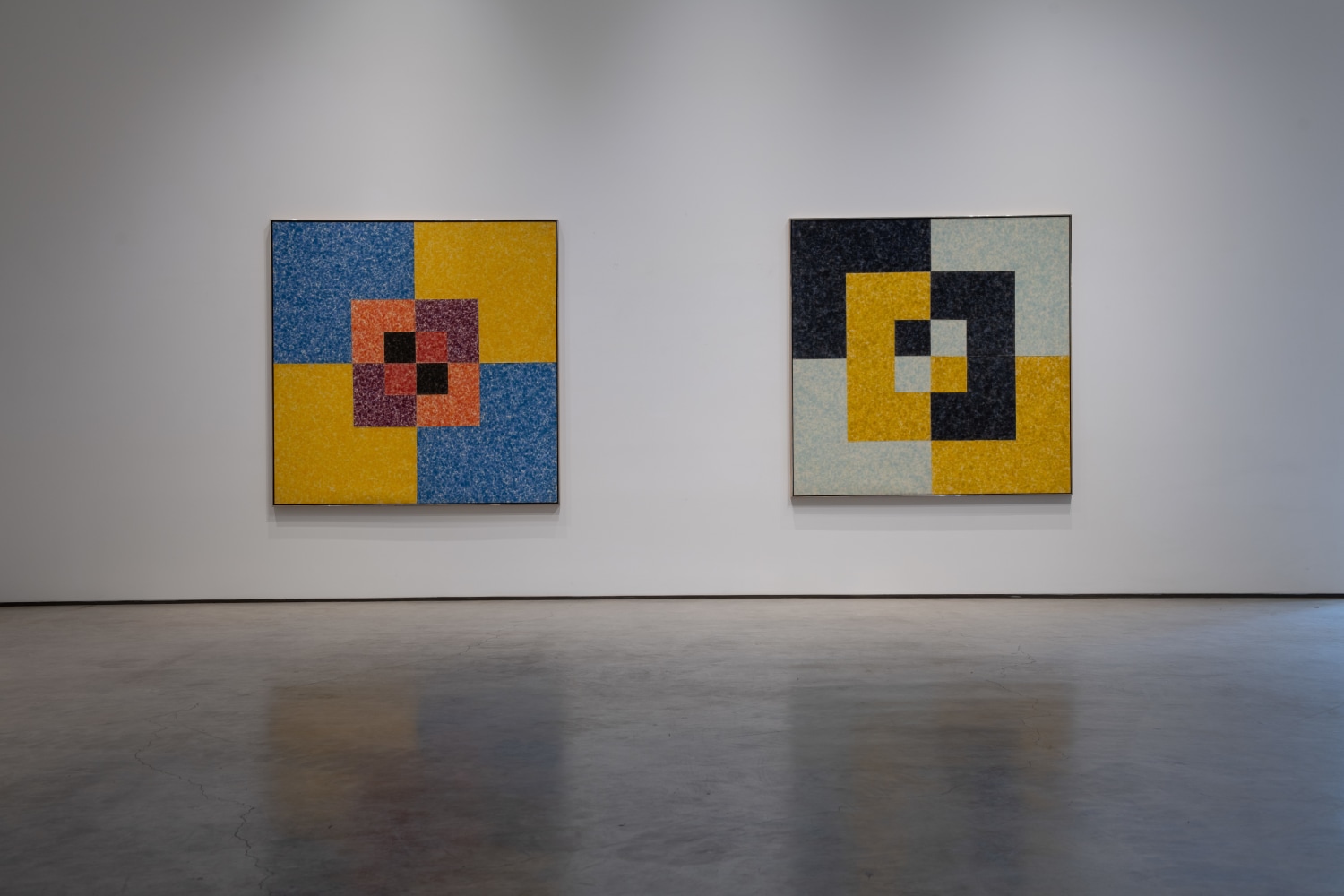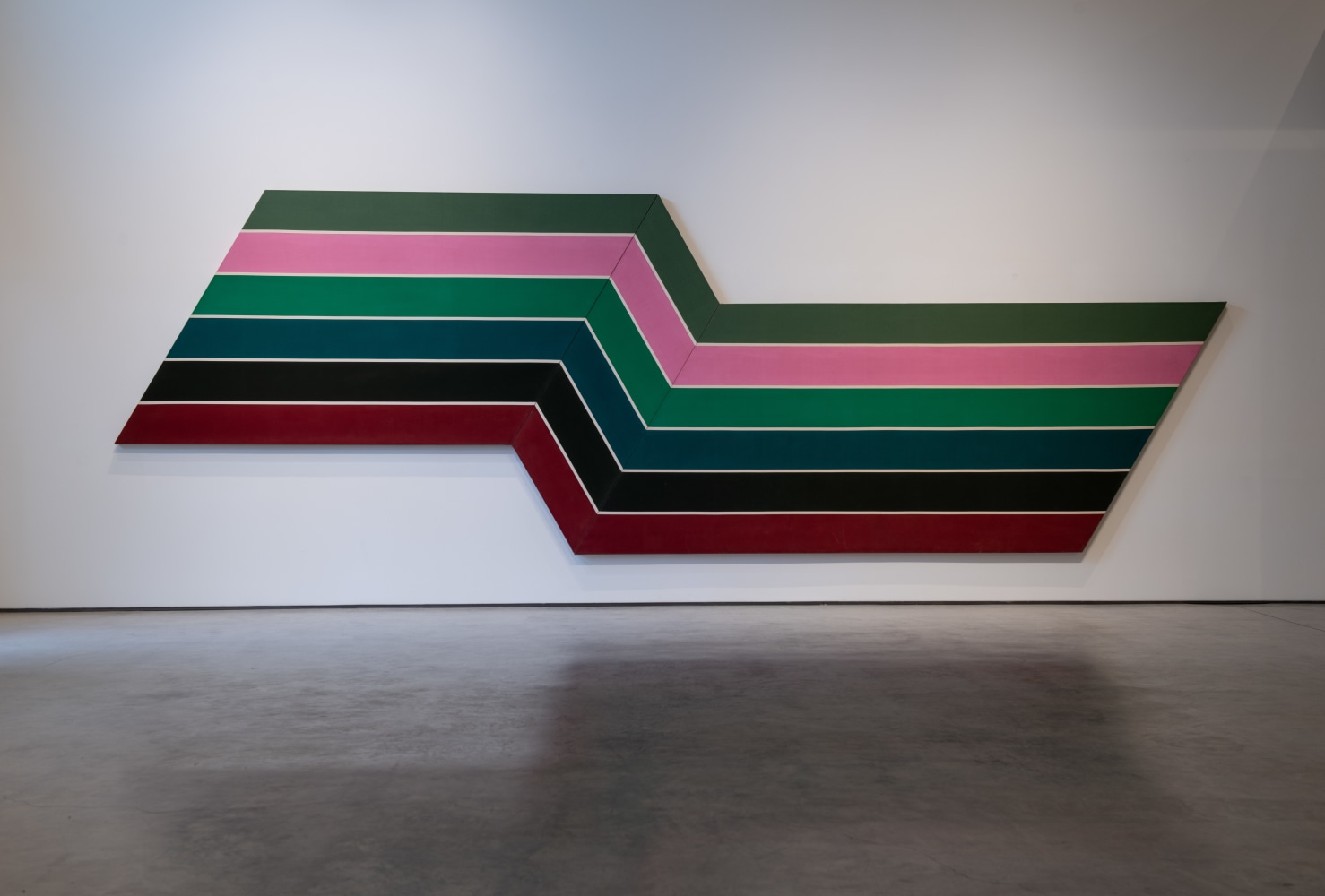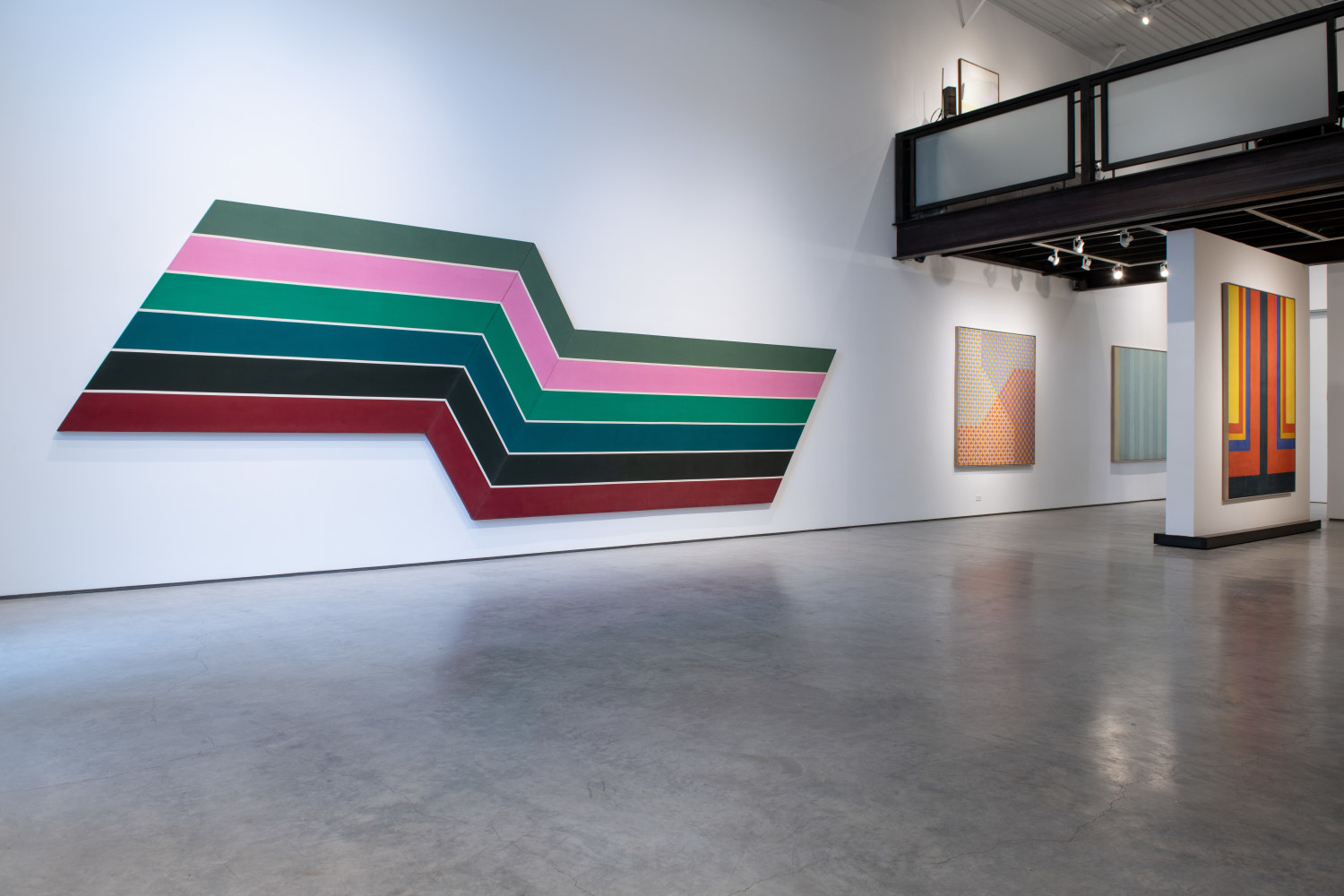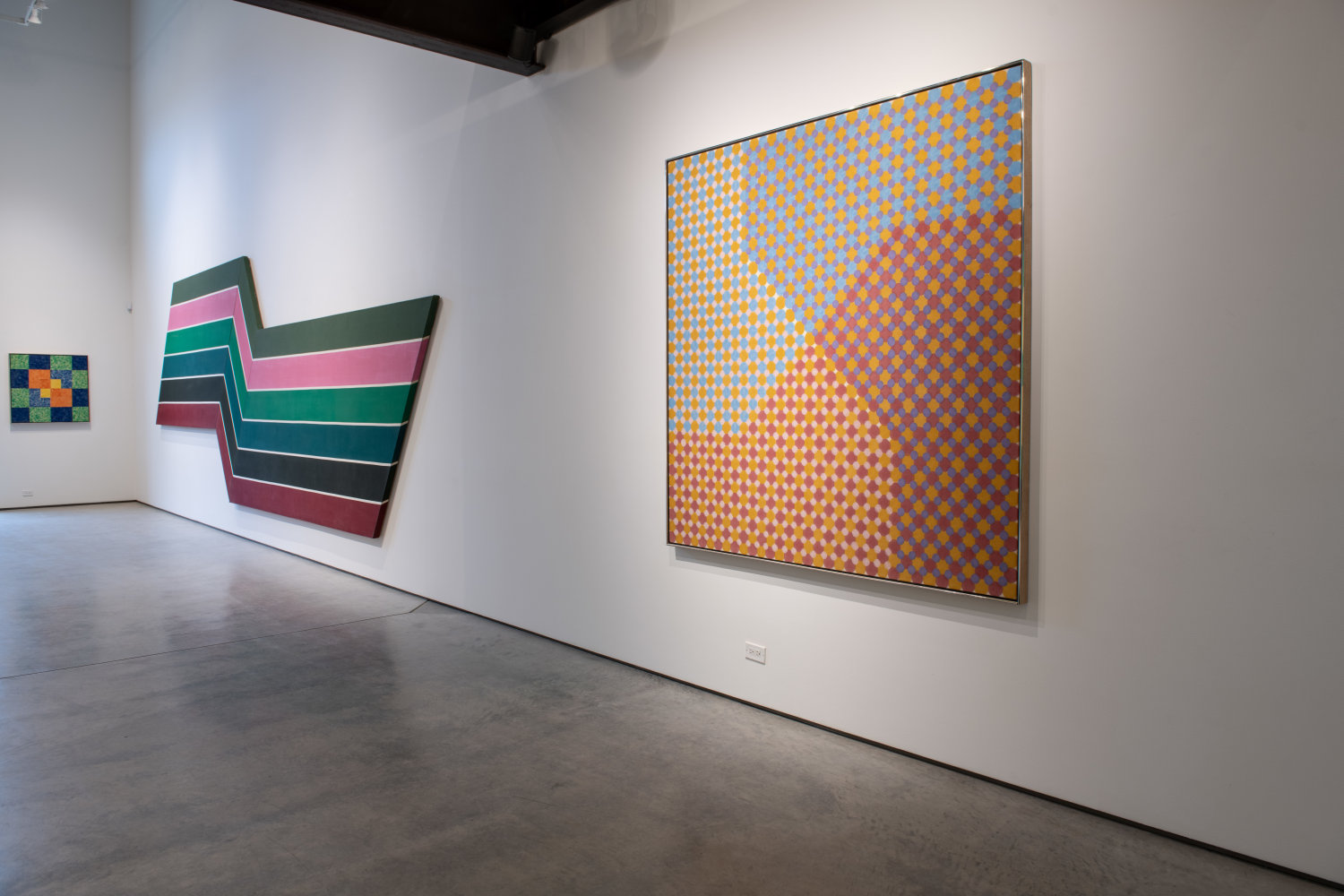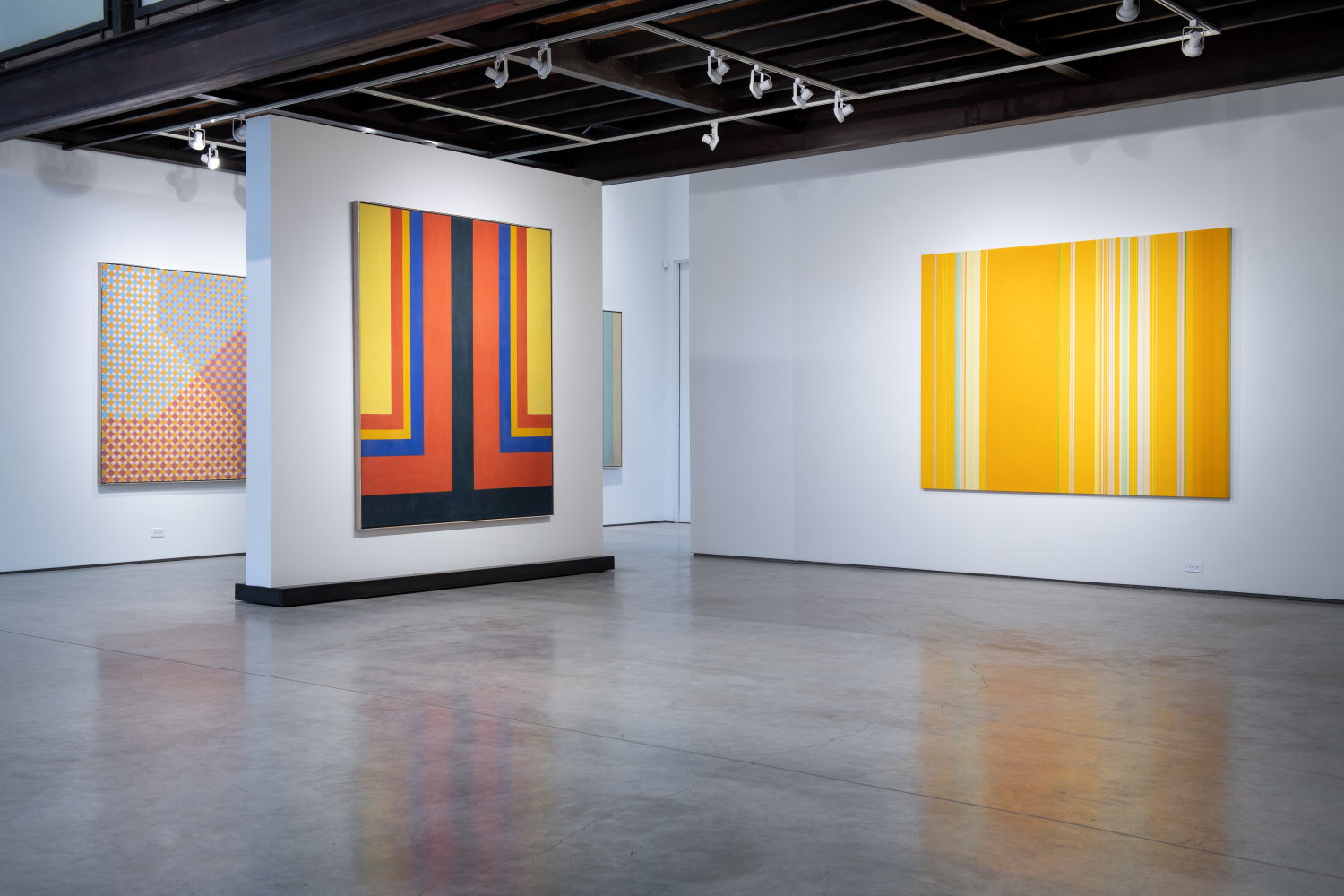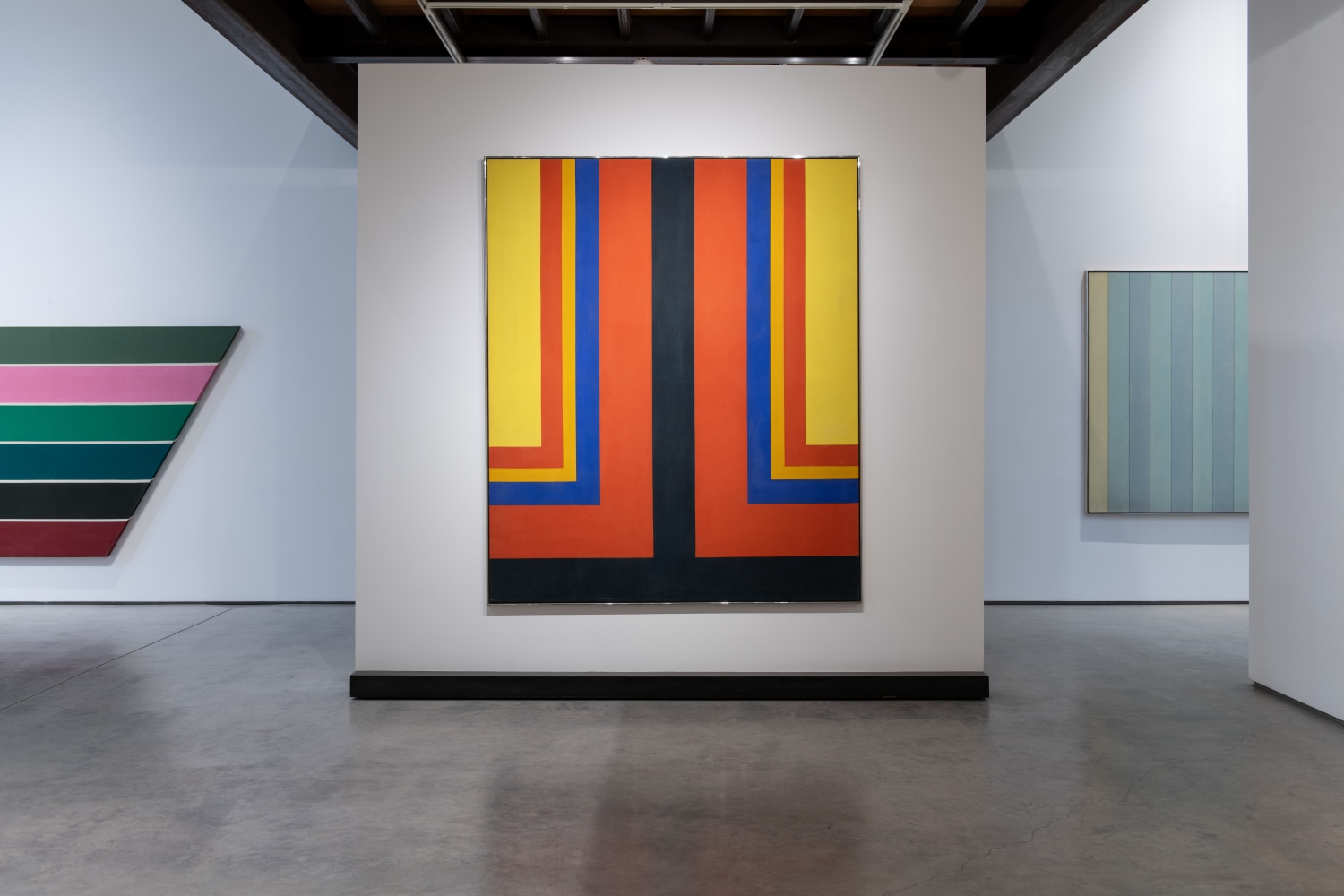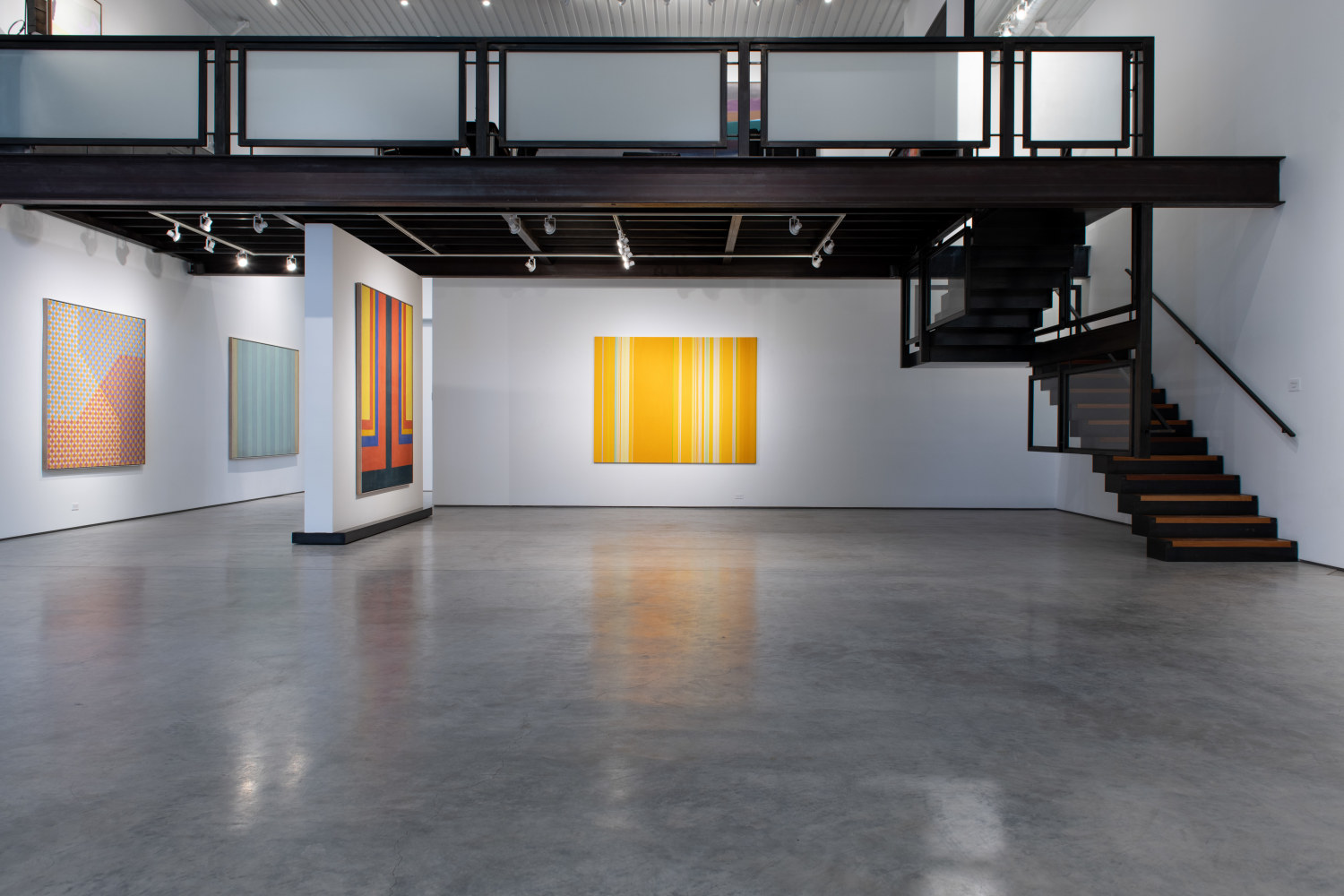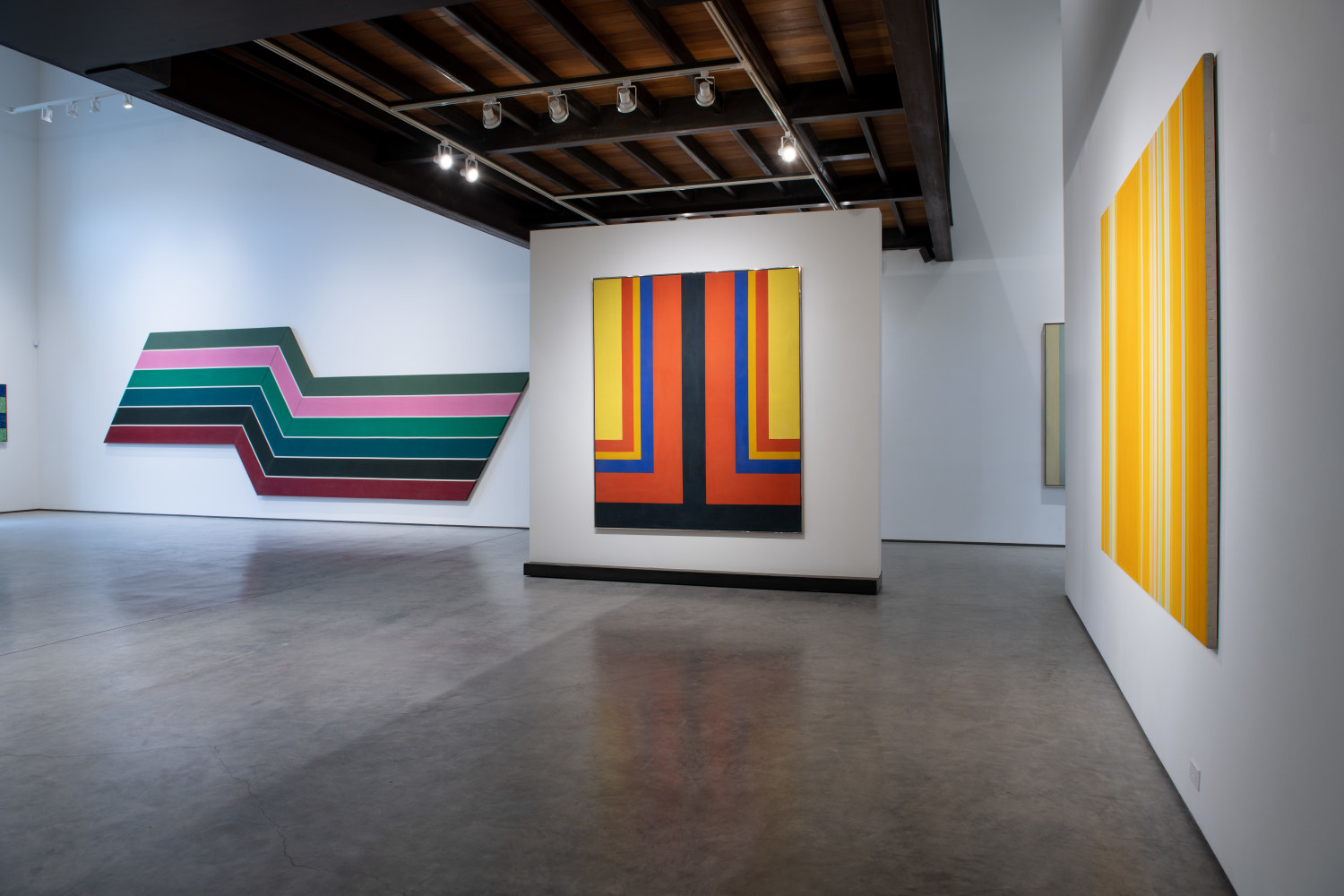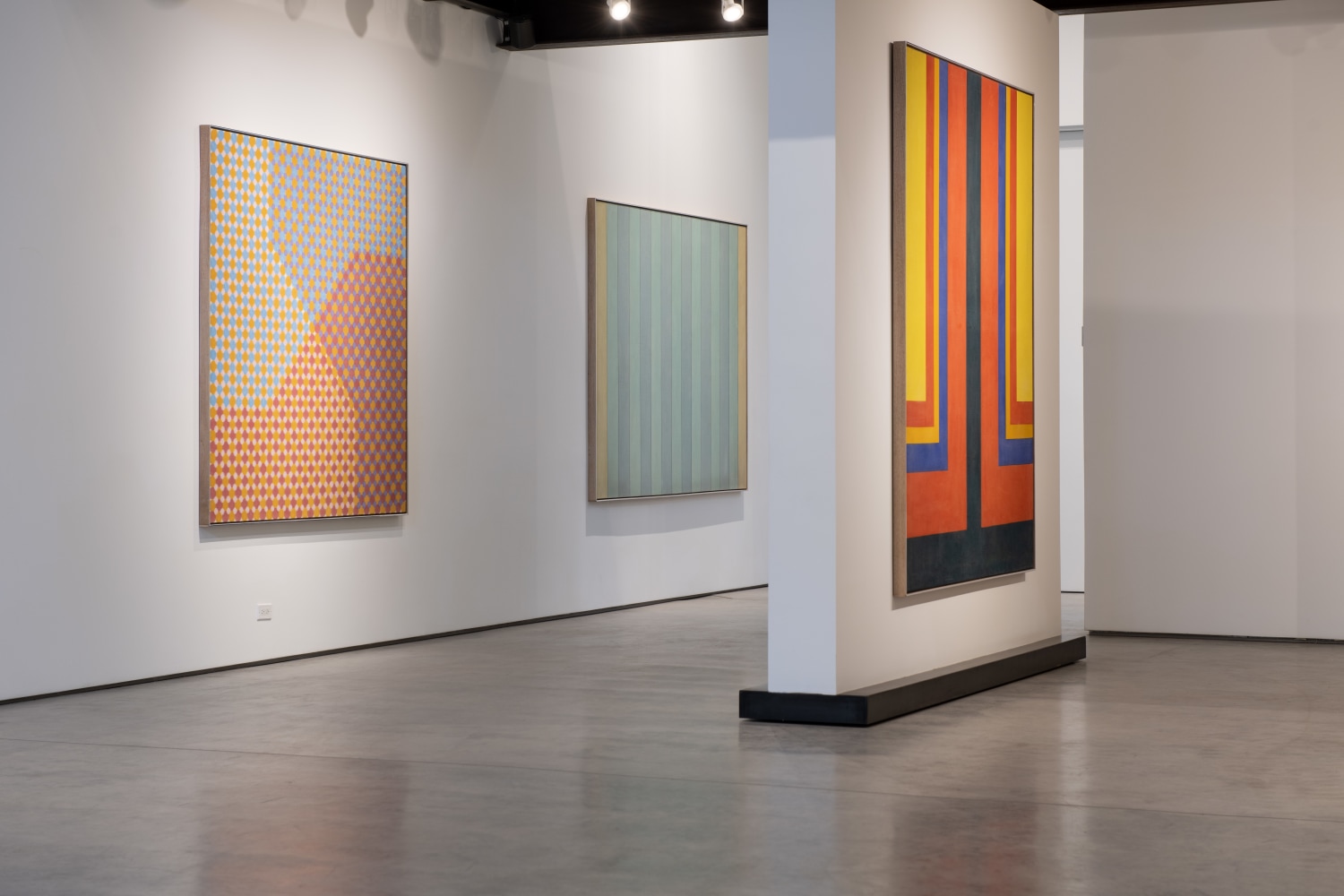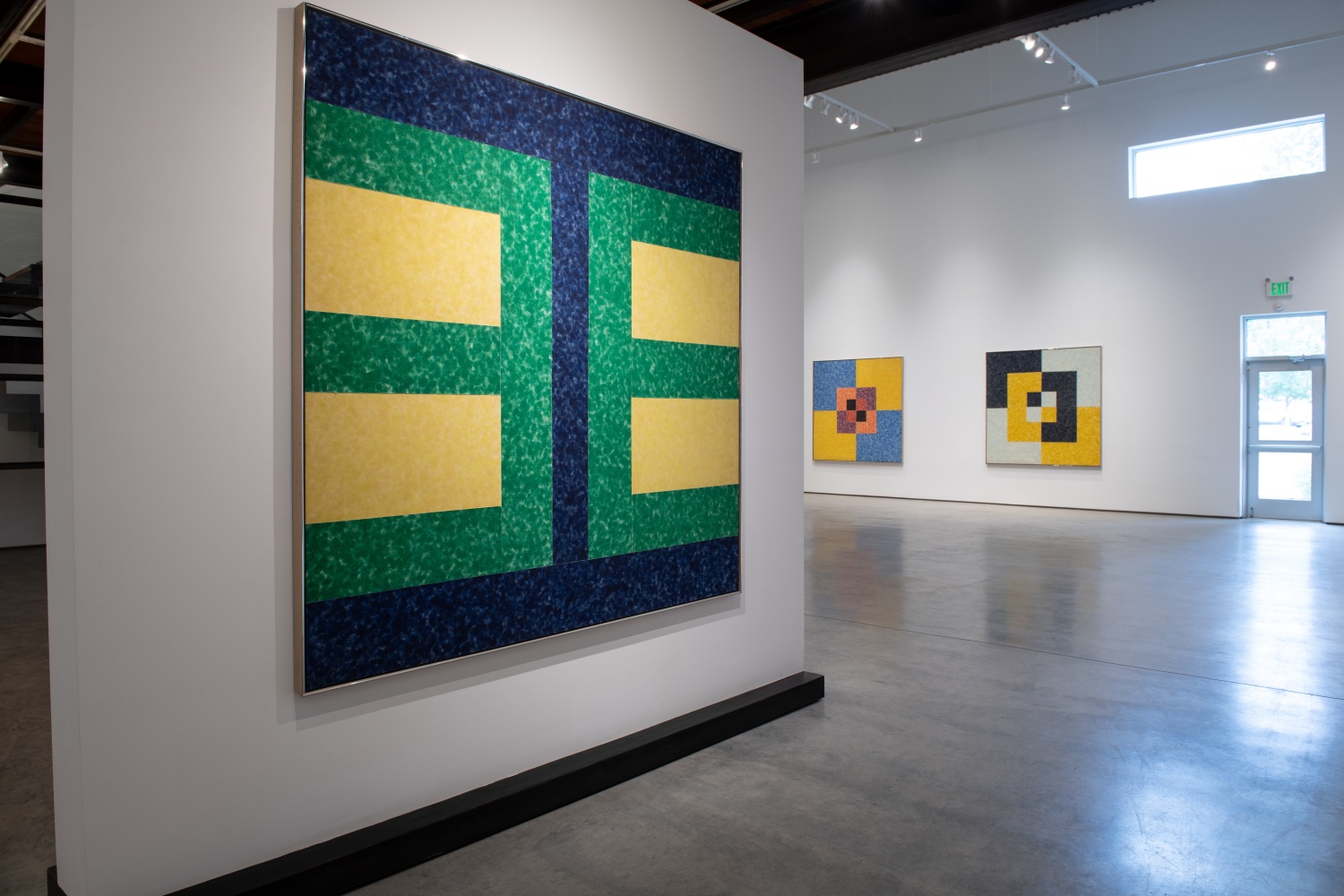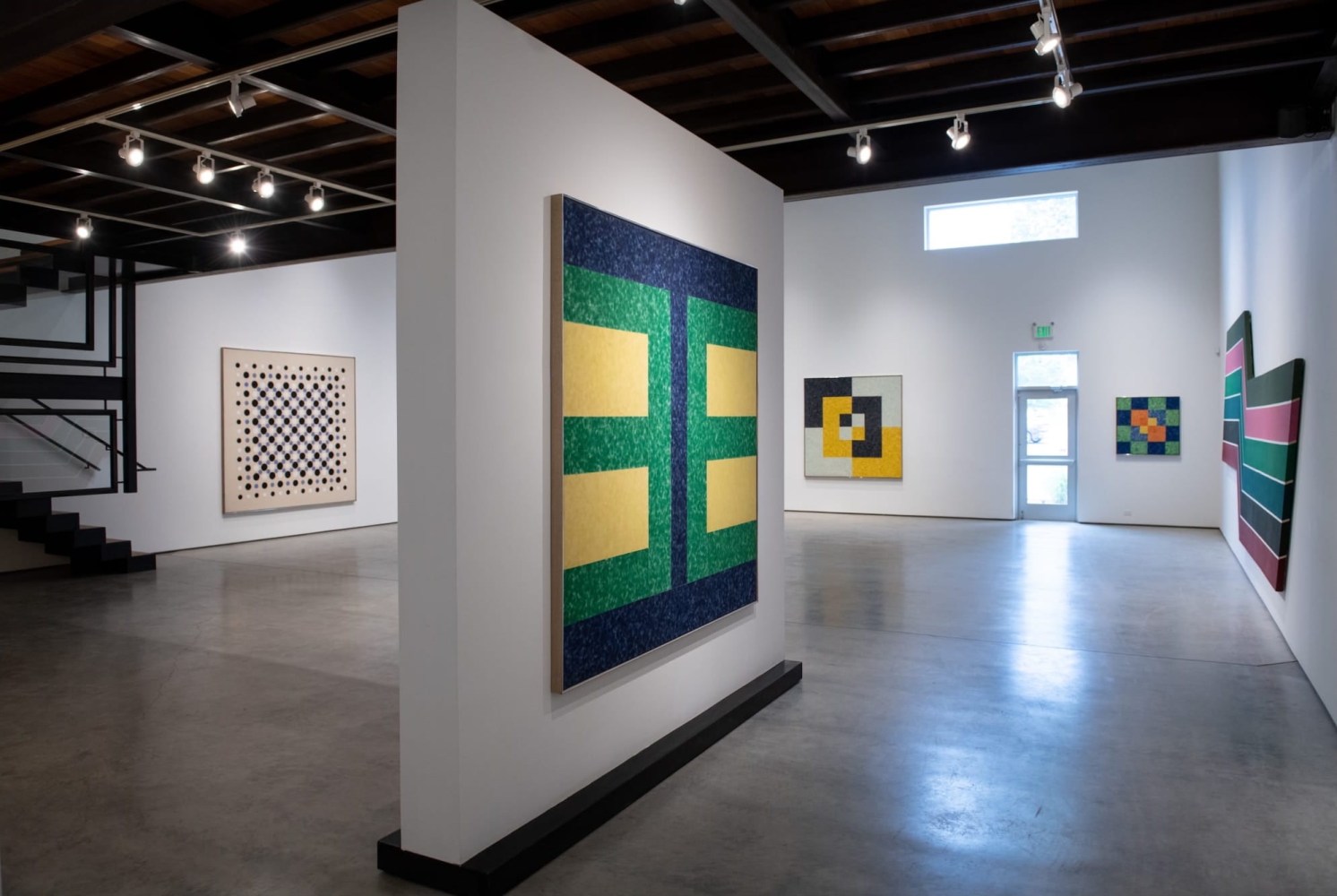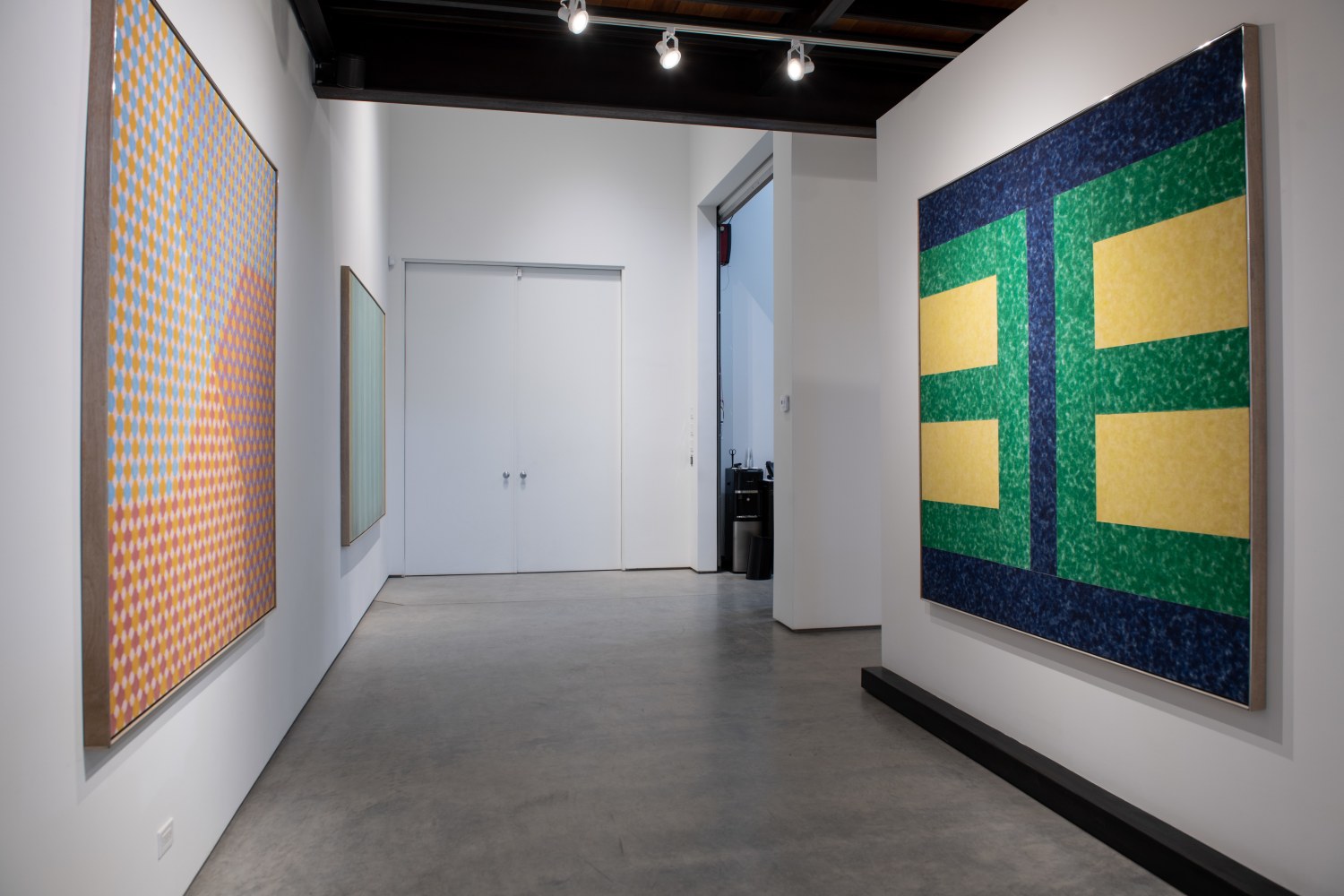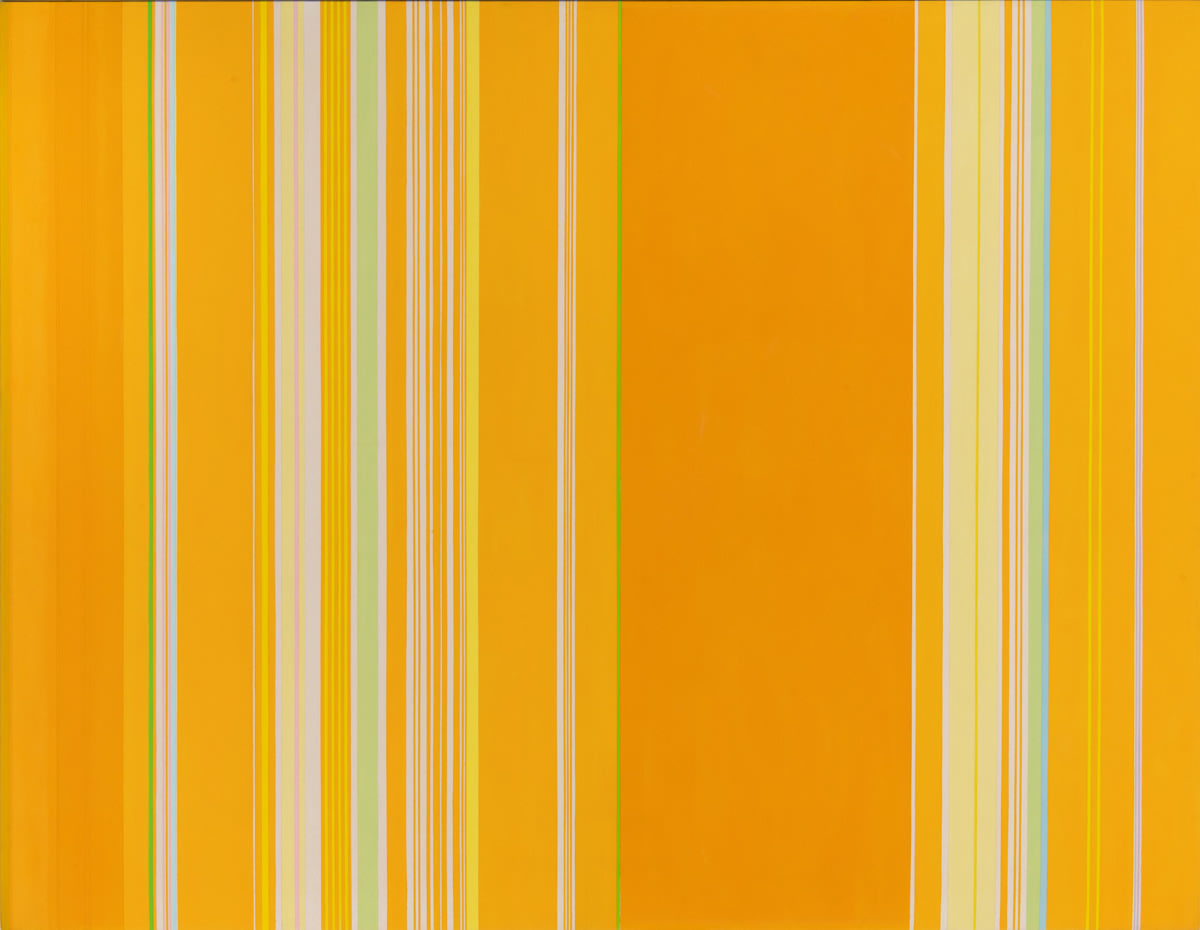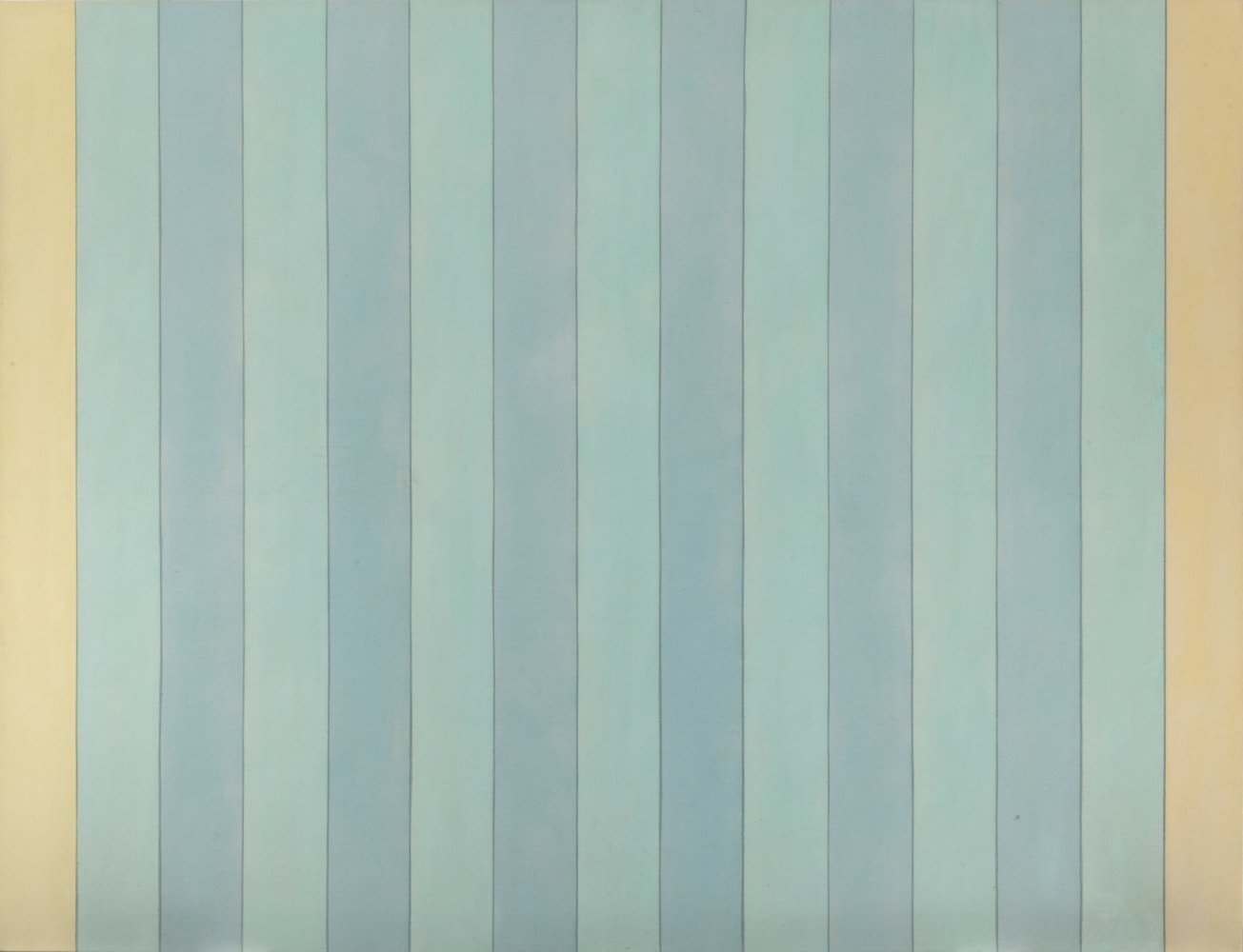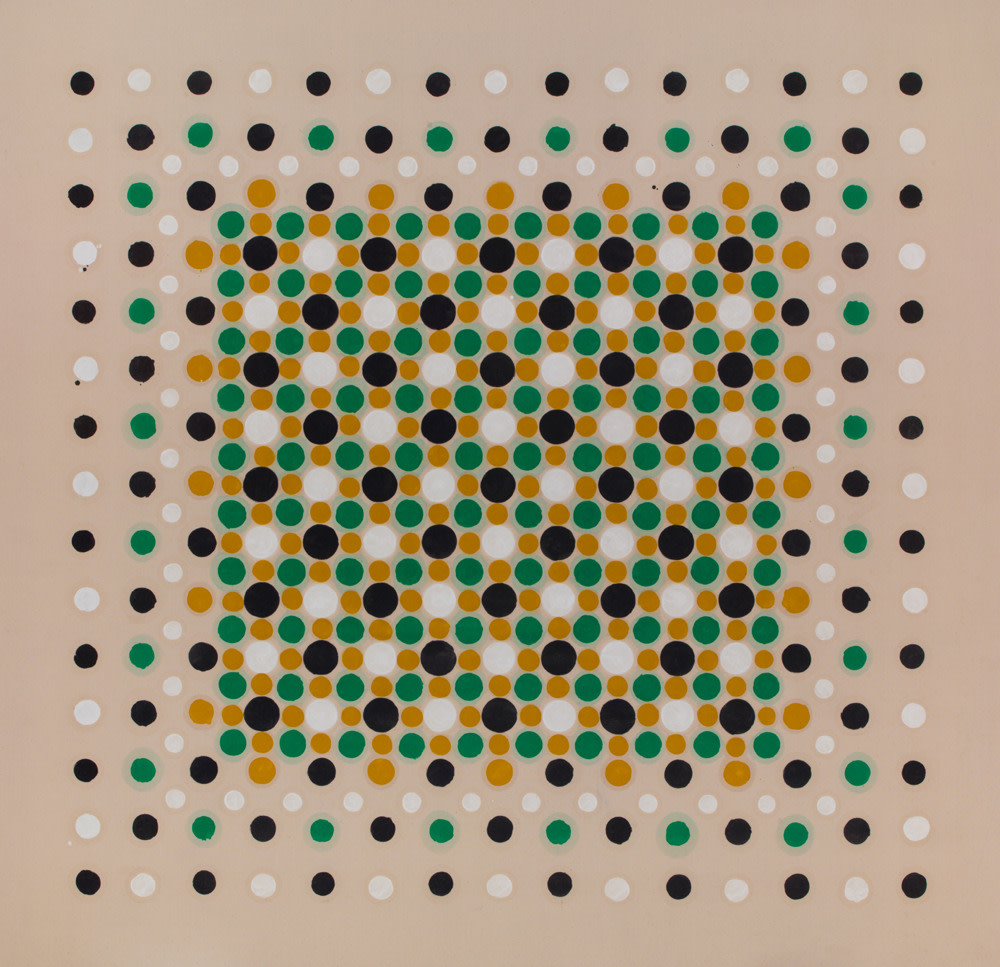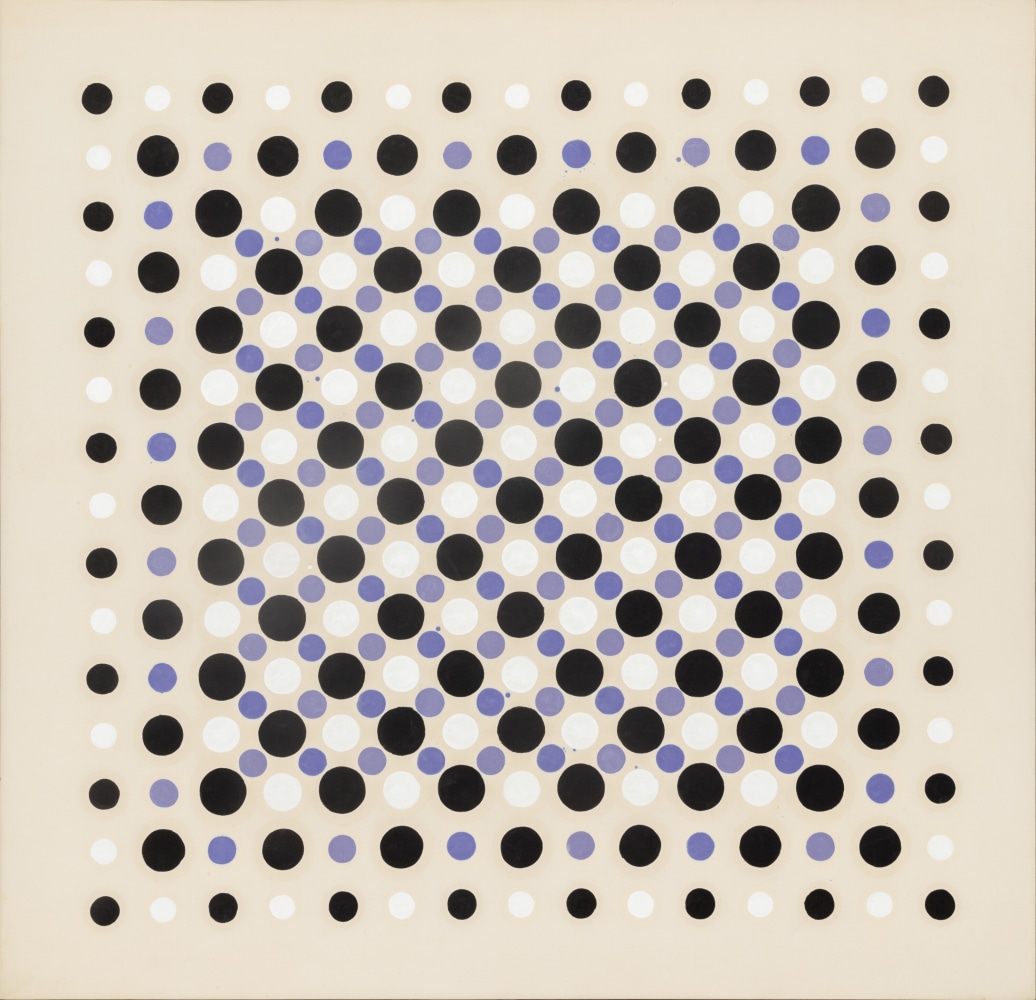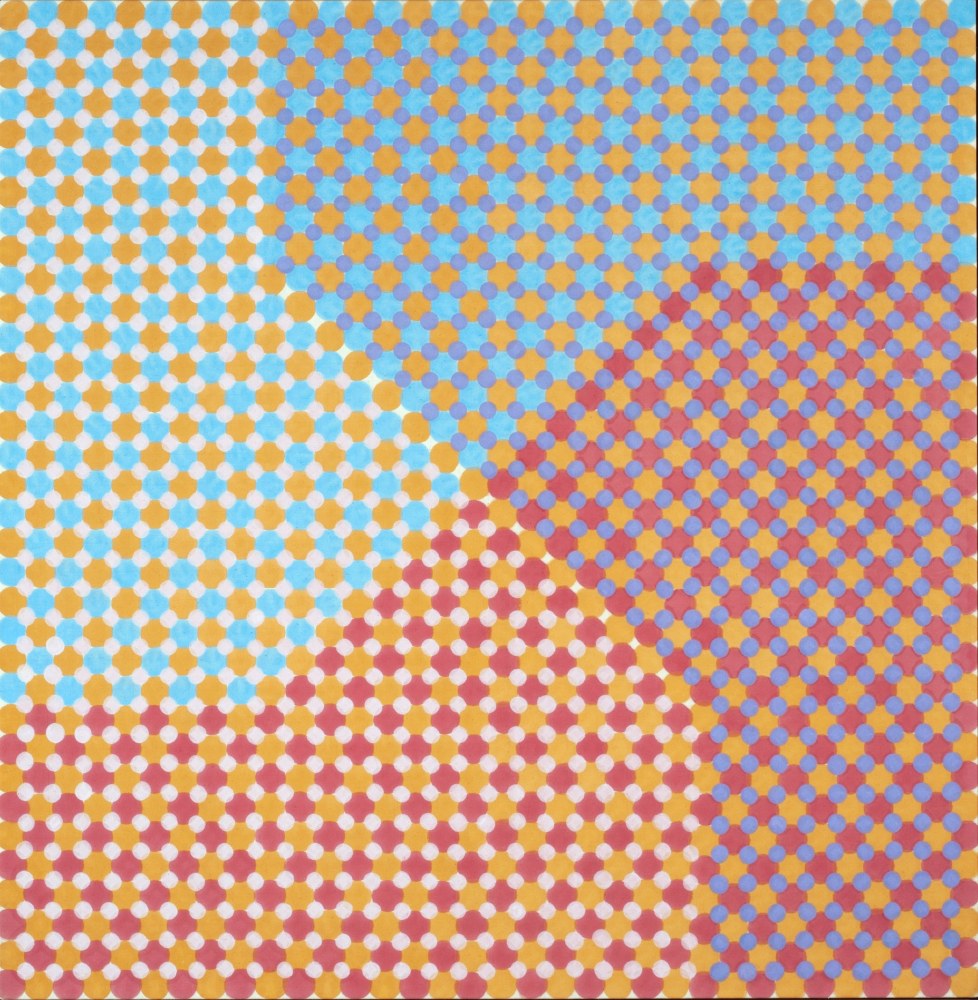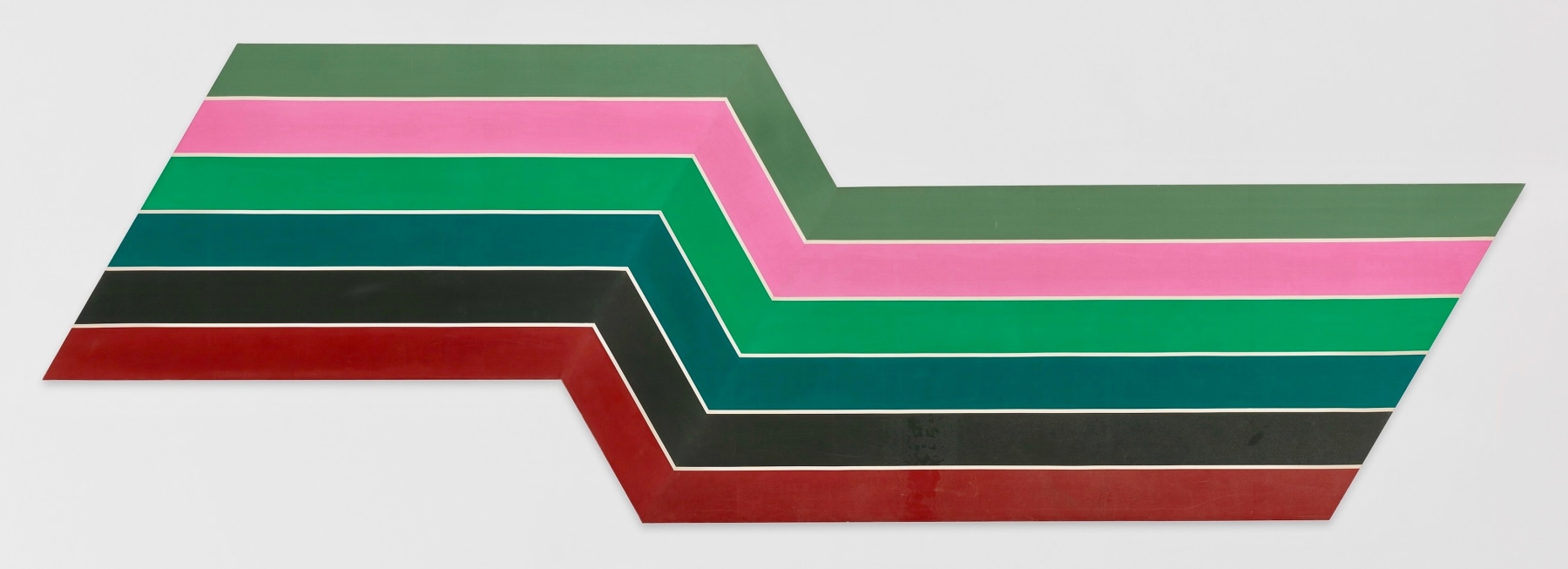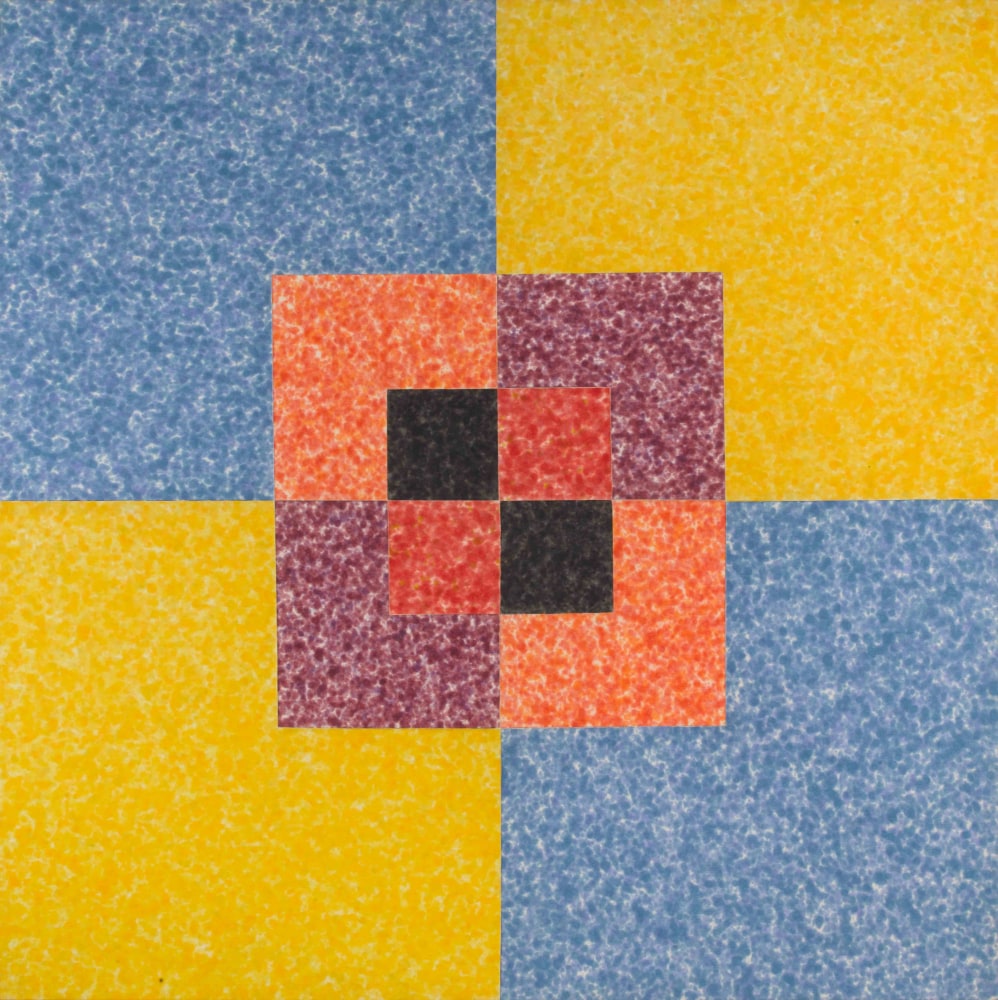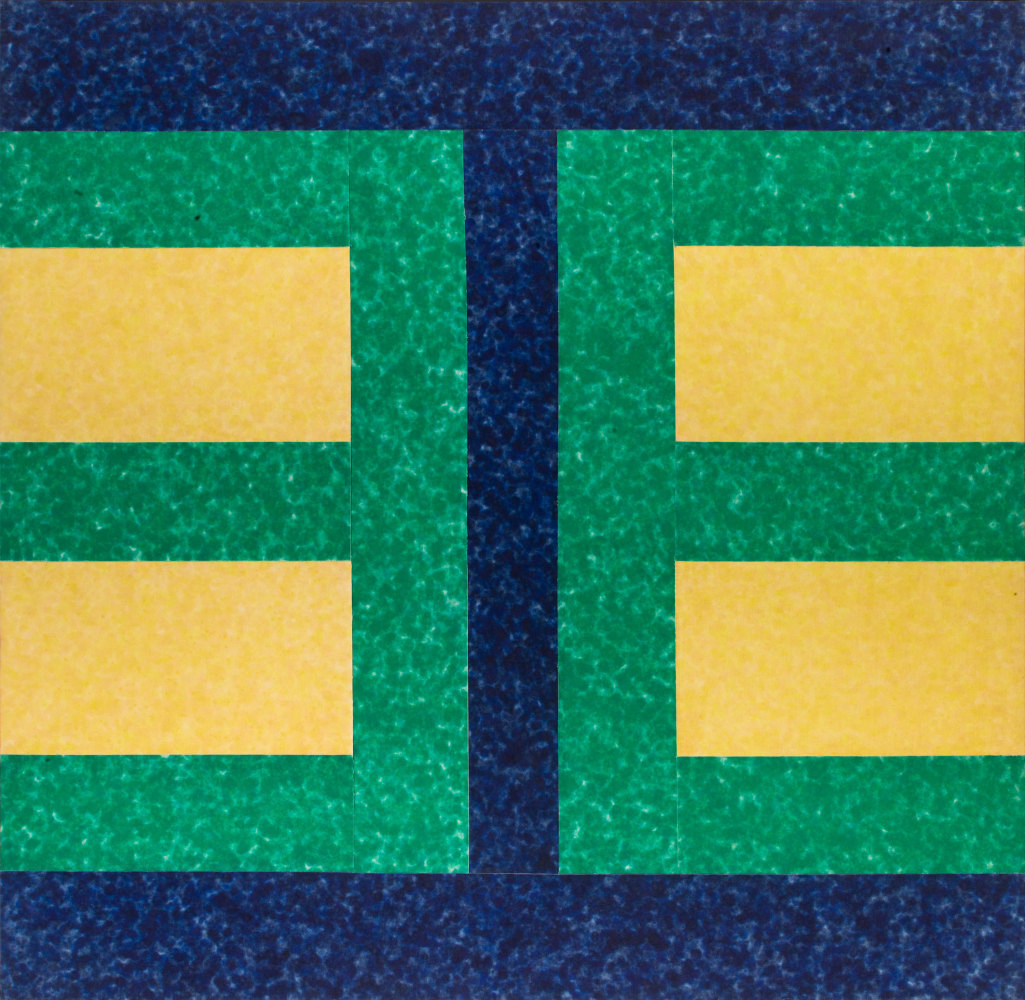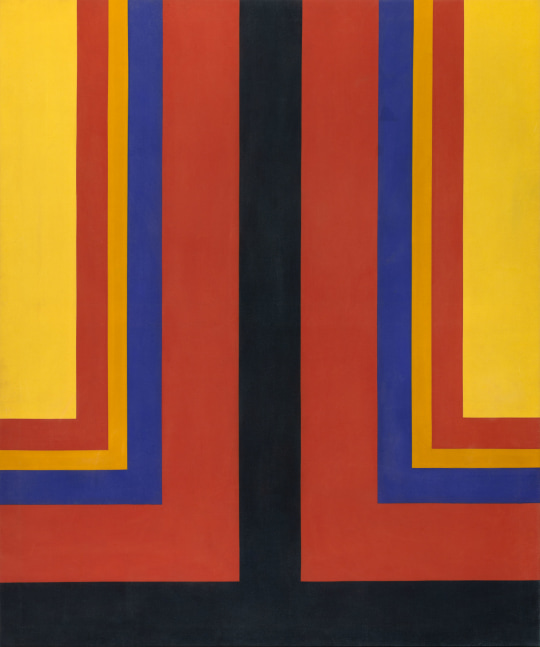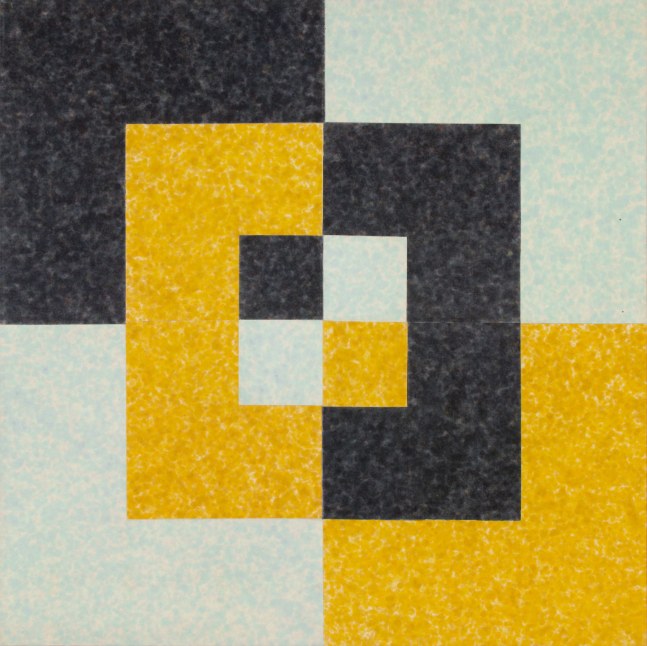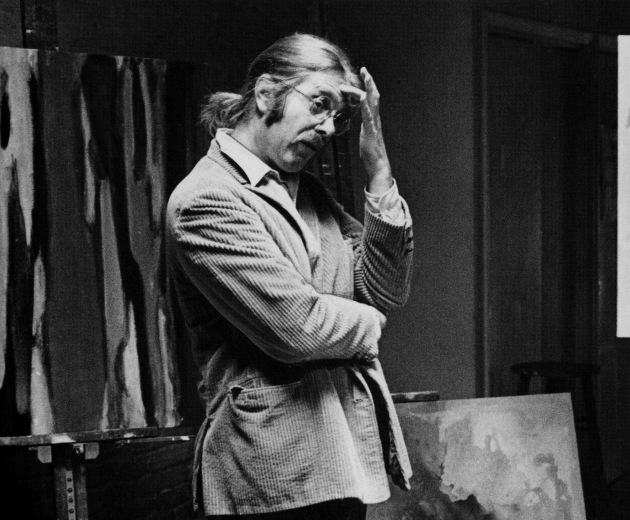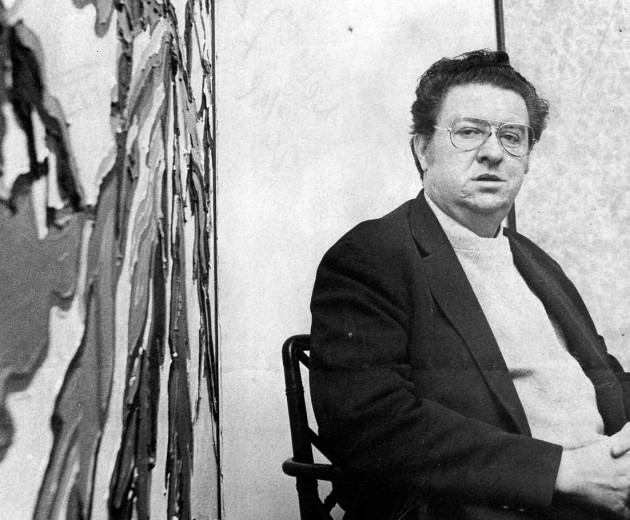
YARES ART is pleased to present DC THREE, an in-depth exploration of three artists from the original Washington Color School: Gene Davis, Thomas Downing, and Howard Mehring. Central to this influential movement, founded by Morris Louis and Kenneth Noland in the late 1950s in Washington, DC, were large-scale works utilizing rigorous design schemas and lavish color with the goal of both deviating from and agitating the Abstract Expressionist status quo. In contrast to the often more ethereal, chromatic washes of paint favored by many contemporaneous Color Field painters—like Helen Frankenthaler, Clyfford Still, and Jules Olitski—Davis, Downing, and Mehring produced riveting, hard-edge compositions that intensified the viewing experience.
Renowned for his mesmerizing compositions of vertical bands of color that change in width and hue, Gene Davis (1920–1985) boldly experimented with both color and scale throughout his career. Among the highlights of the exhibition is "Hive" (1969)—a composition comprised of sharply defined, equal-width, multicolored stripes that lend themselves to sustained periods of viewing. Thomas Downing (1928–1985) is best known for his schematic arrangements, which generally present intricate, gridded patterns of circles of different colors and sizes. However, some, like "Midnight Blue" (1963), eschew such rectangular regimentation, opting for mandala-like configurations that rely on subtle shifts in the colors and dimensions of their constituent circles to create a centrifugal optical force that builds in strength with prolonged viewing. In contrast, Howard Mehring (1931–1978) rendered powerful geometric arrangements of rectangular shapes in divergent colors, achieving a signature balance within his compositions. Such a balance is evident in the architectonic, "Spring Is" (1963), a palindromic design of marbled blue, green, and yellow hard-edge shapes that both mirror and converge on one another.
Witnessed collectively, the works featured in the DC THREE exhibition impart a sense of timeless monumentality, and are a testament to the indelible achievement of the Washington Color School.

